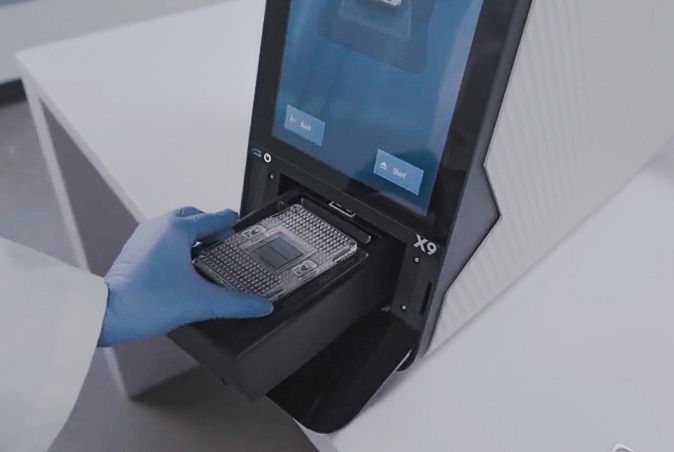Last month, we ran a short article introducing our microfluidic genomics technology and outlining how our system makes quality control, pathogen detection and genomic inquiry faster, more efficient, and infinitely more flexible. The article did what we’d hoped: it caught plant breeders’ attention and generated interest and questions. Most of the questions started with, “So how might that work with my specific application?” While every plant breeding program has somewhat different needs and objectives, let me bring in some perspective of one of our clients, Sakata Vegetables Europe, talking about how they’ve employed our technology to solve very specific needs in their program.
In Les Ponts de-Cé, France, Sakata Vegetables Europe set up a new lab designed to continuously analyze plant physiology, germination rates, seed health and genetic data to ensure only the best quality seed is supplied to customers. This goal required the acquisition of technologies that could rapidly adjust from a low number of QC testing samples at the start to an exponentially increasing number of samples through scaleup, while maintaining high and consistent levels of robustness throughout.
From the outset, Sakata’s team knew it wanted to use microfluidic chip-based technology.
“One of our big advantages to [using] microfluidic chips is to be able in one run to manage multiple markers to differentiate all of our genetics and on the other hand to have markers linked to traits to characterize those varieties,” said Sakata Vegetables Europe’s Jean-Philippe Pichaut, EMEA Quality Control and Seed Technology Manager, in a webinar.
While different microfluidic chip solutions existed in the marketplace, most technologies didn’t fit Sakata’s needs: they either couldn’t scale up progressively, set-up wasn’t user-friendly, and/or they didn’t adapt well for microfluidic chip loading.
The system that did fit their needs? Standard BioTools’ microfluidic chips: specifically, the 192×24 well format, which the Sakata team used for routine testing, and the 96×96 well format, which they used for development.
“There was a big internal discussion about what technology to use,” said Pichault. “…We had exchanges with colleagues from the US using microfluidic chips from Standard BioTools and they were convinced about the added value of that technology. Previously we had had good experience in a singleplexed approach with high throughput… but in terms of the balance of our needs, we made the choice to go through Standard BioTools’ chips because in terms of costs and number of datapoints in one run, it was the most cost effective and also the easiest to use, easy to handle system.”
He also noted that, whereas the up-front investment of a singleplexed line is very high, that wasn’t the case with Standard BioTools.
“So, to start an activity, it’s nice [from a cost perspective], but then when we forecast our future volume of activity, it’s still competitive, so that’s why we did this choice,” he said.
While the Sakata team runs a fixed panel, they then use additional markers when they want to characterize different varieties. The ease of modifying assays — adding, subtracting assays as needed while retaining the core panel — is one of the Standard BioTools’ key differentiators.
Interested in learning how Standard BioTools’ microfluidic chips might work in your lab? Check us out here. Or, we’d be happy to walk you through the technology and its applications. You can reach us at education.team@standardbio.com









